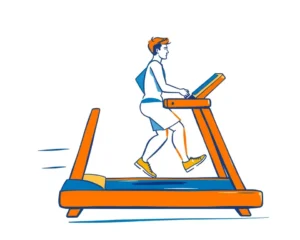An endurance cyclist who has battled and overcome cancer not once, but three times, is now preparing for a challenging trek to the Annapurna base camp. His incredible recovery is being attributed to his strict exercise routine and carefully planned diet, highlighting the critical role these lifestyle factors can play in cancer recovery.
The Power of Exercise in Cancer Recovery
It’s widely acknowledged that physical activity is a key component in cancer treatment and recovery. The cyclist’s story is a powerful testament to this. Regular exercise is known to:
- Improve physical function: Cancer treatments like chemotherapy, radiation and surgery, often result in muscle loss, fatigue and reduced mobility. Exercise, particularly aerobic and strength training, helps to counteract these effects, improving physical function and ability to perform daily activities.
- Combat fatigue: Cancer-related fatigue is a common and debilitating side effect of treatment. Consistent physical activity can significantly reduce fatigue levels, boosting energy and overall well-being.
- Enhance mental health: The emotional toll of cancer can be immense, leading to anxiety and depression. Exercise has been shown to release endorphins, natural mood boosters that can alleviate these mental health challenges, improve self-esteem and provide a sense of control over one’s health.
- Strengthen the immune system: Physical activity helps to strengthen the immune system, which is crucial for fighting cancer and recovering from treatment.
- Reduce risk of recurrence: Research suggests that regular exercise may reduce the risk of some cancers recurring, and improve long-term survival rates.
- Improve sleep: Exercise can improve sleep patterns, helping patients get the rest they need to recover.
The cyclist’s routine likely incorporates a mix of cardio and strength training exercises, essential for building endurance and overall physical strength. These activities not only aid in physical recovery but also contribute significantly to mental and emotional well-being, playing a critical role in improving the overall quality of life for cancer survivors.
The Crucial Role of Diet
Alongside exercise, a carefully planned diet is another key factor in the cyclist’s recovery. Nutrition plays a vital role in helping cancer patients cope with the disease and its treatment. The right foods can:
- Strengthen the immune system: A balanced diet rich in fruits, vegetables, lean proteins, whole grains, and healthy fats provides the body with essential nutrients, which are critical for a robust immune response, and fighting off cancer cells.
- Maintain body weight and muscle mass: Cancer and its treatment can lead to weight loss and muscle wasting. A diet that provides enough calories and protein helps to maintain a healthy weight and lean muscle mass, which is crucial for strength and overall well-being.
- Aid in tissue repair: Lean proteins are vital for repairing body tissues, a process that is essential, especially after intensive treatments like surgery or chemotherapy.
- Increase energy levels: A balanced diet provides the necessary fuel for the body, combating the fatigue associated with cancer and its treatments and enhancing energy levels.
- Improve treatment tolerance: Good nutrition can improve the body’s ability to tolerate cancer treatments and minimize side effects.
- Reduce inflammation: Foods rich in antioxidants can help reduce inflammation, a common side effect of cancer treatments.
- Support gut health: Whole grains, rich in fiber, support regular digestion and overall well-being, contributing to better gut health.
Hydration is also critical. Adequate water intake helps with digestion, maintains body temperature, and ensures nutrients are transported effectively throughout the body. Eating at the right times and in the right quantities, helps manage side effects, maintain healthy body weight and strength, and improves the body’s ability to heal.
Recommended Foods for Cancer Patients:
- Fruits and vegetables: Packed with antioxidants, they help neutralize harmful free radicals that can damage cells and trigger diseases. A variety of colorful produce ensures a range of phytonutrients. Aim for at least five servings a day.
- Lean proteins: Essential for tissue repair and maintaining muscle mass. Include sources like beans, pulses, fish, eggs and lean meats.
- Whole grains: Provide fiber for gut health and support regular digestion.
- Healthy fats: Such as omega-3 fatty acids, boost the immune system and help reduce inflammation.
It’s important to avoid or limit saturated fats, processed foods, high-calorie foods, refined sugars, and processed or red meat, as they are associated with a higher risk of developing cancer.
The Annapurna Challenge
The cyclist is now focused on a significant personal challenge: trekking at the Annapurna base camp. The Annapurna Circuit, a popular trekking route in the Himalayas, is known for its stunning scenery and challenging terrain, with the highest point being the Thorong La pass at 5,416 meters. This high-altitude trek is a serious test of endurance, requiring excellent physical conditioning and mental resilience.
While the original source mentions the cyclist is aiming for the Annapurna base camp, the Annapurna Circuit is a well known and challenging trek/cycling route, making it a suitable goal for a cancer survivor who is also an endurance athlete. The Annapurna Circuit is a 220km trek in the Nepali Himalayas, renowned for its breathtaking views, deep river gorges, and the Thorong La Pass, the highest mountain pass on Earth. The mountain biking route passes through rough terrain, stones, pebbles, steep up and downhill trails which are challenging even for experienced cyclists.
The Annapurna Circuit
- Distance: Approximately 240 miles (386 km).
- Terrain: A mix of dirt roads, double tracks and challenging singletrack, with several hike-a-bike sections.
- Elevation: Starts at around 800m and climbs to 5,416m at Thorong La Pass, before descending back to 800m in Pokhara.
- Difficulty: Considered a challenging trek, requiring good fitness levels and acclimatization to high altitude.
His goal, whether it is the base camp or the full circuit, is a powerful symbol of resilience and the human spirit’s ability to overcome adversity.
A Story of Hope and Determination
The cyclist’s journey is an inspiration to anyone battling cancer. By combining a strict exercise routine and a carefully planned diet, he has not only recovered from cancer three times but has also regained his physical fitness and mental strength. His upcoming trek to Mt. Annapurna symbolizes his indomitable spirit and offers a message of hope and determination to all.
This story underscores the importance of incorporating regular physical activity and a balanced diet into the lives of cancer patients and survivors, highlighting their potential to significantly improve health outcomes, quality of life, and overall well-being. It also proves that even in the face of enormous challenges, the human body and spirit can achieve remarkable feats.







